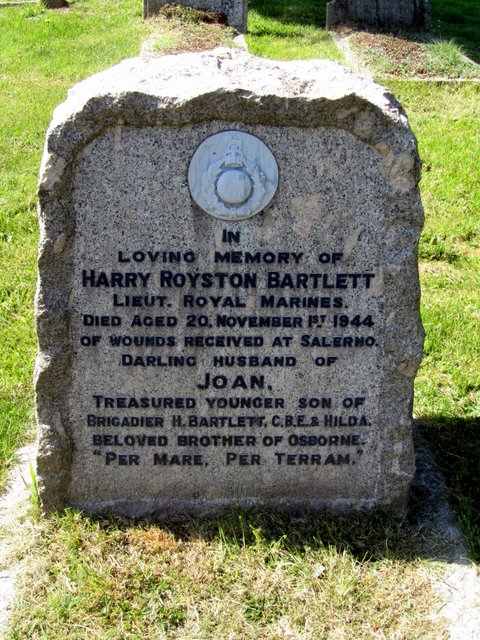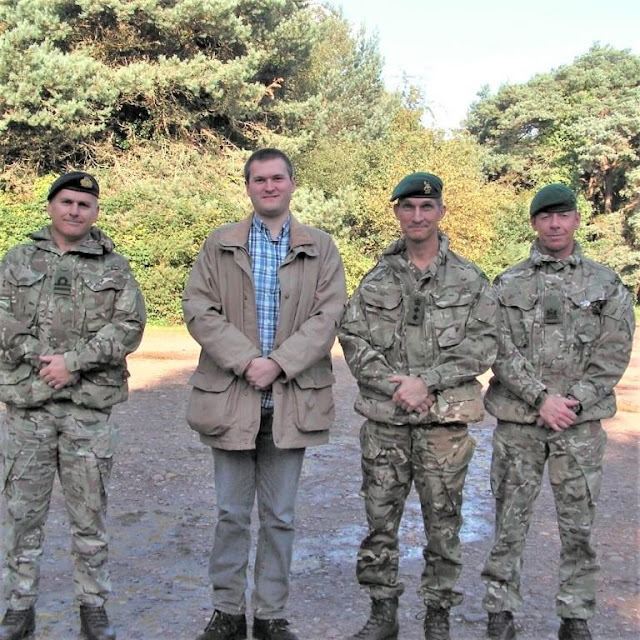WW2 100 - 1 November 1944 - A brave Royal Marine, wounded at Salerno: Lieutenant Harry Royston Bartlett, Royal Marines (1924-44)

Continued from 15 October 1944 PRIVATE ALBERT GEORGE WATKINS (1915-44) 1 st Battalion, Devonshire Regiment https://budleighpastandpresent.blogspot.com/2021/04/ww2-75-15-october-1944-budleigh-man.html Harry Bartlett's grave in Budleigh Salterton Image credit: https://images.findagrave.com Harry Bartlett, usually known as Roy to his family, died of illness as a result of wounds received in Italy more than a year earlier. You might think, on seeing his grave at St Peter’s Burial Ground, with its reference to Harry as the treasured younger son of Brigadier H. Bartlett CBE, that this was a typical military officer-class Budleigh background, including, of course, a public school education. In fact, although his name appears on Budleigh Salterton’s war memorial, his only connection with the town – apart from a training stint with the Royal Marines at their Dalditch camp - was that his wife Joan was apparently a Saltertonian. Harry’s father, the Brigadier, also named


